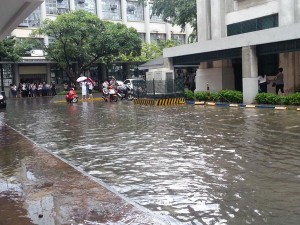MANILA, Philippines—On January 9, 2012, President Benigno Aquino issued Executive No. 66, which prescribes the rules on suspension of classes and work in government offices due to typhoons, weather disturbances and other calamities.
Classes in certain levels in areas where storm signals are raised are automatically suspended.
Signal No. 1: No classes in kindergarten
Signal No. 2: No classes in elementary and high school
Signal No. 3: No classes in all levels including tertiary level
“The [Philippine Atmospheric Geophysical and Astronomical Services Administration] shall issue weather forecasts through various media outlets (radio and television), and the NDRRMC, not later than 10:00 p.m. of the previous day and 4:30 a.m. of the day of the intended cancellation of classes and work. In cases where there are classes and work in the morning and suspension of classes and work is only effective in the afternoon, PAGASA should issue the forecast not later than 11:00 a.m. of the said day,” the EO says.
But in the absence of storm signal warnings raised by the weather bureau, local government units are authorized to suspend classes and work in government offices in flood-prone or high-risk areas.
In the event of other calamities such as earthquakes, tsunamis and floods, the announcement of the suspension will also depend on local government units concerned.
However, government agencies involved in disaster risk reduction and management shall maintain the operations of their respective offices to be able to serve the public: The said offices are: Office of the Executive Secretary; Department of National Defense; Department of the Interior and Local Government; Department of Social Welfare and Development; Department of Science and Technology; Department of Health; Department of Public Works and Highways; Department of Education; Other agencies whose operations the President or the [National Disaster Risk Reduction and Management Council] may deem necessary.
